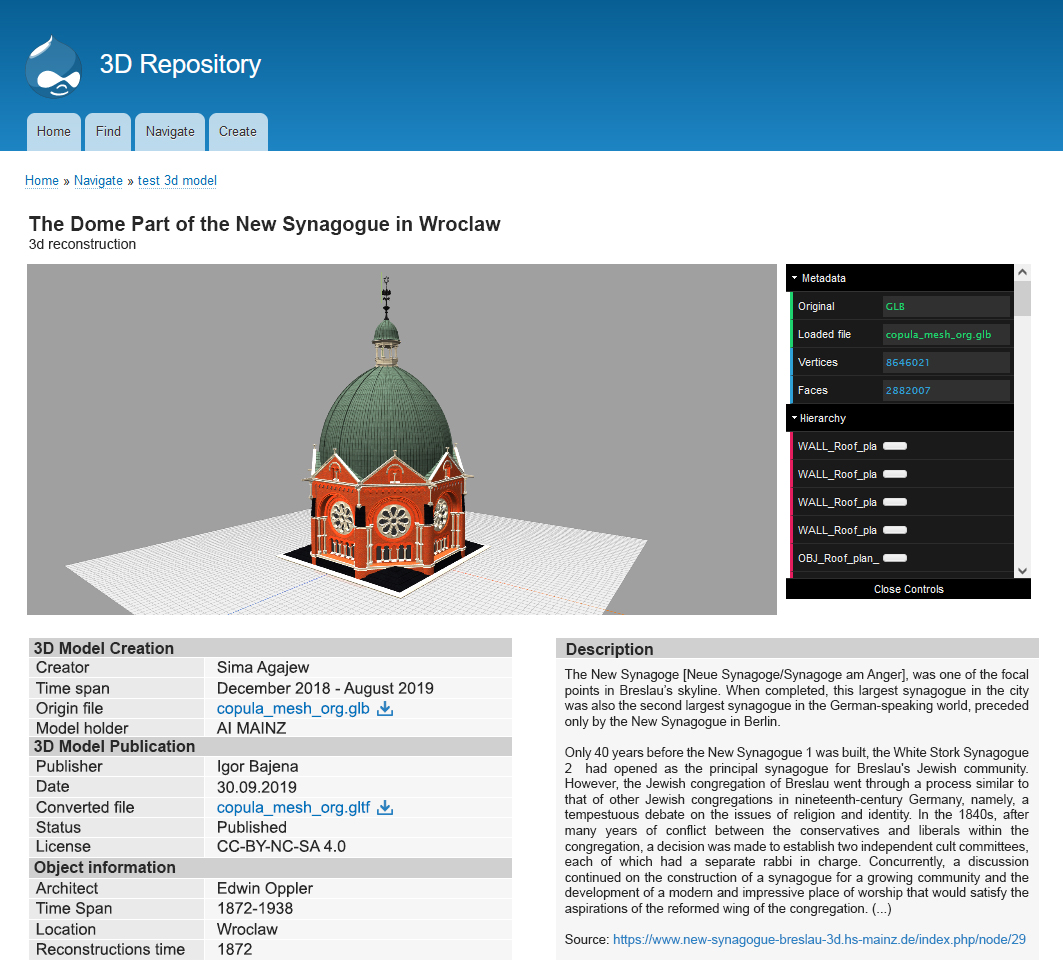The development of a digital 3D viewer infrastructure for historical 3D reconstructions is intended to offer a sustainable accessibility, archiving of 3D raw data and metadata as a permanent infrastructure and to enable collaboration and expert discourse on the digital model by generating 3D web models from common data types. The project is funded by the German Research Foundation (Deutsche Forschungsgemeinschaft/DFG).
The overall goal of the project is to develop a digital 3D viewer for digital, source-based 3D reconstructions.
The Subgoals are:
- Creation of an interdisciplinary application profile
- Establishment of a 3D repository
- Development of a documentation standard for the delivery of the 3D model
- Interactive 3D visualization of various data formats
- Rights concept
- Dissemination
In the joint project DFG 3D-Viewer the AI MAINZ is responsible for the web-based 3D visualization (computer graphics) of manifold data sets as well as the establishment of a 3D repository and development of a documentation standard (metadata).
The architecture of the DFG 3D-viewer is developed considering existing web-based 3D viewers. The framework for the scientific 3D infrastructure (considering documentation and publication) is cross-browser, platform independent and based on modern promising and long-term supported technology. It has been decided to use 3D library called three.js. Our Viewer allows viewing of 3D models with textures, stored in the most common formats used nowadays (i.e. OBJ, DAE, FBX, JSON). The viewer is extended to meet the requirements of the 3D community, including the possibility of displaying highly complex geometries and other data formats (inter alia IFC and FBX). It will be also capable of loading 2D images (JPG, PNG, TIFF), 3D metadata and provide 3D world operations on models.
The solution is integrable out of the box, open source and client-only in order to distribute workload away from the server and minimize the requirements for repository providers to support the DFG 3D-Viewer. Moreover, uploading 3D data triggers automatic compression on-the-fly (based on Draco algorithm) and encoding into the glTF format which is optimized for web-based visualization. The Viewer itself can be used as JavaScript extension and the server-side compression was developed as Drupal module.
An inseparable element of the publication of a 3D model is the attachment of the documentation to ensure the scientific value of the model. During the project, a set of metadata as a documentation standard will be proposed in coordination with the academic 3D community. The metadata schema is embedded in a prototypical 3D repository based on the WissKI system, where 3D assets are uploaded and semantically enriched. The field based data entry within WissKI system provide human and machine readable documentation by using the application ontology OntSciDoc3D (Ontology for Scientific Documentation of source-based 3D reconstruction of architecture).
Projektpartner
Friedrich-Schiller-Universität Jena, Juniorprofessur Digital Humanities
Sächsische Landesbibliothek – Staats- und Universitätsbibliothek Dresden
Projektförderung
Deutsche Forschungsgemeinschaft (DFG) – Projektnummer 439948010
Projektlaufzeit
April 2021 – März 2023






















